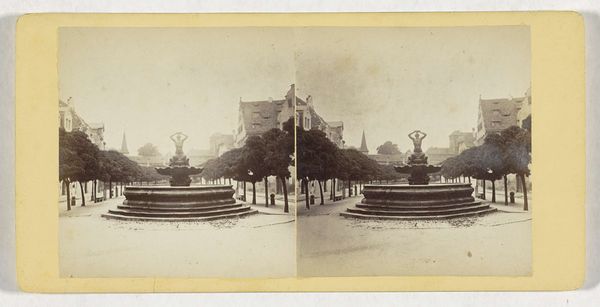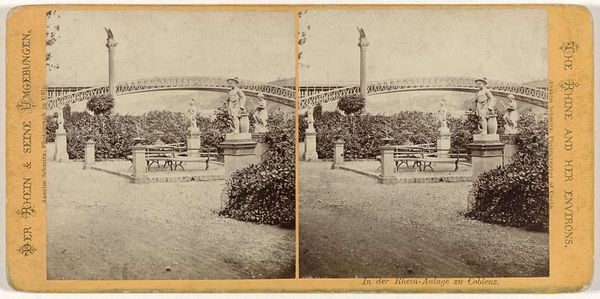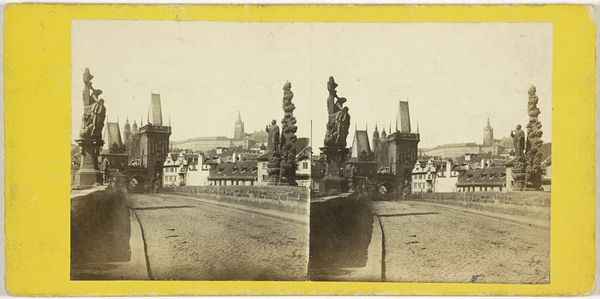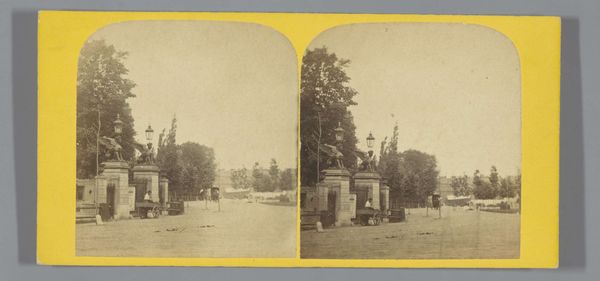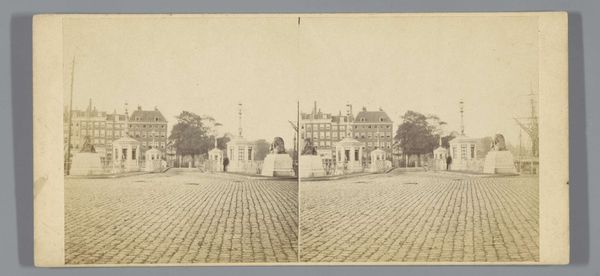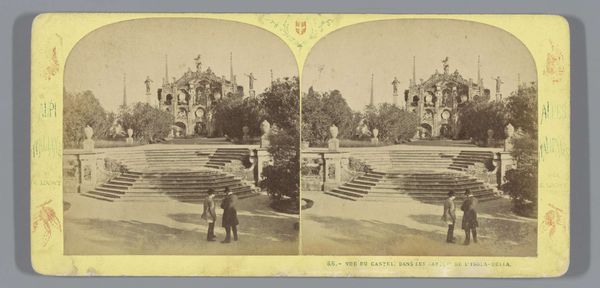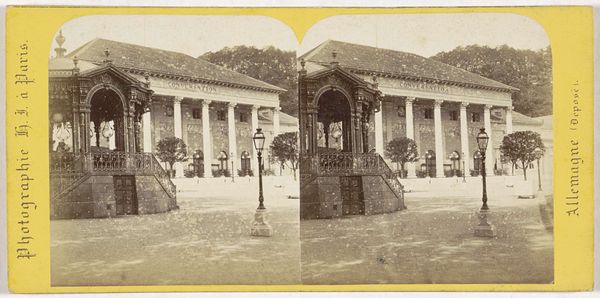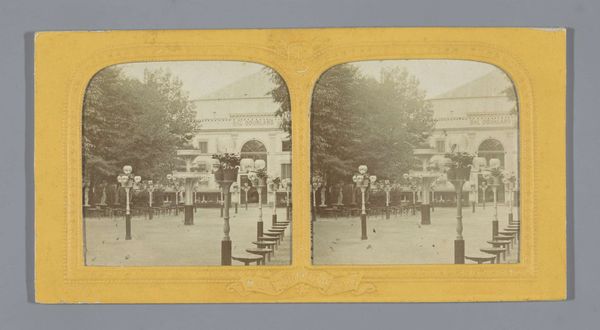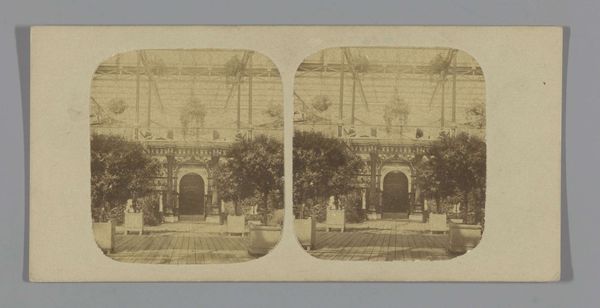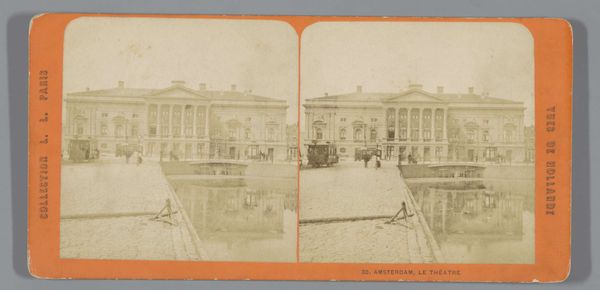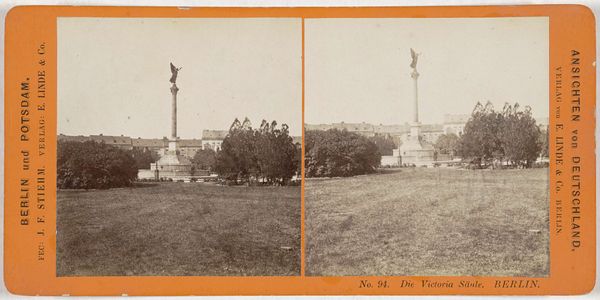
Dimensions: height 86 mm, width 175 mm
Copyright: Rijks Museum: Open Domain
Curator: Welcome! Here we have an early example of Pictorialist photography. The work before us, "Brug in Baden-Baden in het Zwarte Woud, Duitsland", presents a bridge within the German Black Forest region. It's a gelatin silver print dating back to between 1861 and 1870. Editor: The overall tonality is so subdued! It lends the image a kind of serene formality. The linear perspective of the bridge itself creates an attractive vector leading the eye towards the cityscape, a series of horizontal shapes under the hill, creating depth through size diminution. Curator: It is compelling to consider the making of such images at this point in the mid-19th century. The process of creating gelatin silver prints was not without its complexities, reliant on careful manipulation of chemistry and light sensitivity to render such detailed scenes. The consumption of these views provided an avenue for exploring exotic, and local locales. Editor: Indeed, the attention to composition is undeniable. I am drawn by the sharp, focused details juxtaposed with blurred textures that evoke a watercolor, where a romantic sensitivity meets the scientific accuracy newly provided by photography, don’t you think? Curator: Precisely! It reflects the changing social attitudes towards photography itself. Originally considered a purely documentary medium, Pictorialism emerged as an effort to elevate photography to the level of fine art, comparable to painting. Editor: I think we are both noticing that visual quality – a merging of different representational modalities. And the material properties of gelatin silver prints-- that slight gloss, its tonal range, create this beautiful effect on a utilitarian medium, speaking to artistic aspirations during that period. Curator: Reflecting further on these details offers unique insight into how artistic endeavors adapted to, and subsequently shaped, early industrial practices and the culture in general. Editor: Thank you, both insights invite a more complex encounter with the history of photography as a discipline.
Comments
No comments
Be the first to comment and join the conversation on the ultimate creative platform.
